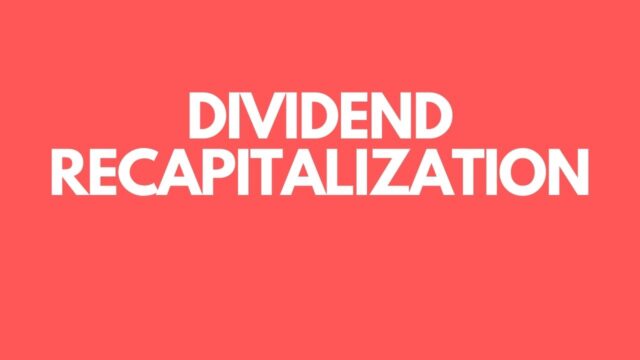
What is dividend recapitalization and why would a company choose to do it
Dividend recapitalization occurs when a corporation borrows money and then uses the borrowed funds to pay a dividend to its shareholders. There are several reasons why a company might choose to engage in this type of transaction.
First, it can help to boost the company’s share price. By paying a dividend, the company is effectively returning cash to shareholders, which can make the stock more attractive to investors. Additionally, dividend recapitalizations can be used to generate additional funds for the company. This borrowed money can be used for general corporate purposes, such as expanding businesses or making acquisitions.
Finally, dividend recapitalizations can also be used as a tool to reduce the amount of equity that shareholders own in the company. By borrowing money and using it to pay dividends, the company can effectively reduce the amount of shares outstanding, which can increase the value of each individual share.
What are the benefits of dividend recapitalization
There are several benefits of dividend recapitalization. First, it can be a way to return cash to shareholders without diluting their ownership stake in the company. Second, it can be used to finance growth initiatives or other projects without affecting the company’s credit rating. Third, it can help to make the company more attractive to potential acquirers. Ultimately, dividend recapitalization can be a flexible and attractive financing option for companies that are looking to raise capital.
What are the risks of dividend recapitalization
A dividend recapitalization is when a company takes on new debt in order to pay out a special dividend to shareholders. This can be a risky move for a variety of reasons. First, it can put the company in a difficult financial position if the markets take a turn for the worse and the value of the company’s stock falls. Second, it can be difficult to manage the increased debt load, which can lead to higher interest payments and decreased cash flow.
Finally, dividend recapitalizations can signal to investors that the company is not generating enough internal growth to fund dividends, which can lead to a decline in the value of the stock. While dividend recapitalizations can be an effective way to return capital to shareholders, they come with a significant amount of risk that should be carefully considered before moving forward.
Who makes the decision to do a dividend recapitalization
The decision to do a dividend recapitalization is typically made by the company’s board of directors, with the advice of financial advisors. There are several reasons why a company might choose to do a dividend recapitalization, including reducing the risk of default, increasing the company’s share price, and providing liquidity to shareholders. However, there are also some risks associated with dividend recapitalizations, including increased leverage and higher interest payments. As such, the decision to do a dividend recapitalization is not one that should be made lightly. Instead, it should only be done after careful consideration by the company’s board of directors.
What are some examples of recent dividend recapitalizations
A dividend recapitalization is when a company takes on new debt and uses the proceeds to pay a dividend to shareholders. This can be done as a way to return capital to shareholders without selling assets or issuing new equity. Some examples of recent dividend recapitalizations include:
- In May of 2018, Yahoo! Japan announced that it would be issuing $12 billion in new debt. The proceeds from the debt issuance were used to pay a special dividend of $8 per share to Yahoo! Japan shareholders.
- In March of 2018, Kinder Morgan, Inc. issued $1.75 billion in new debt. The proceeds were used to pay a quarterly dividend of $0.25 per share, which was an increase from the previous quarter’s dividend of $0.125 per share.
- In December of 2017, AT&T announced that it would be taking on $22 billion in new debt. The company used the proceeds from the debt issuance to pay a special dividend of $1 per share to shareholders.
Dividend recapitalizations can be beneficial for companies because they allow the company to avoid diluting existing shareholders’ equity stake in the company.
Are there any alternatives to dividend recapitalization
As an alternative, companies can sell new equity or issue bonds. Both of these options tend to be less risky than a dividend recap, and they can also provide additional benefits such as reducing the cost of debt and increasing market visibility. However, it is important to note that each option has its own advantages and disadvantages, so it is important to carefully consider all of the options before deciding which one is best for the company.
What are the tax implications of dividend recapitalization
Recapitalizing a company through a dividend can have tax implications for both the company and its shareholders. For the company, there may be taxes due on the increased debt load. For shareholders, they may be subject to tax on the dividends received. In addition, depending on the structure of the recapitalization, it could be considered a taxable event for shareholders. As a result, it is important to consult with a tax advisor before proceeding with a dividend recapitalization.


































